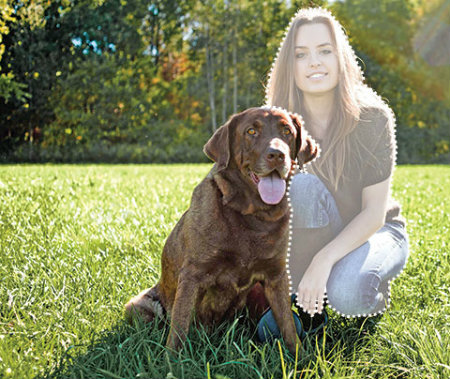

When preparing for life after death, pets are often left out of the plan
When preparing a will or estate plan, people often ensure their children, finances and property are included and commonly forget to include their pets. When unclaimed, pets go to shelters or are left on the streets to fend for themselves.
In 2013, the Humane Society of the United States published the article, “Back Up Plan,” which stated the lack of knowledge by pet owners sends an estimated 100,000 to 500,000 pets to shelters each year after their owners die or became unable to care for them. In communities with high populations of senior citizens, pets outliving their owners can make up half a shelter’s intakes.
Brooke Borg, founder and attorney of Borg Law Group, commonly sees the look of surprise on her clients’ faces when they realize they’ve forgotten their beloved pets in their final wishes. Many times, they assume their family would care for them, but quickly realize they’re unsure.
“People plan for themselves all the time, but they don’t think of planning for their pets,” Borg said. “Pets are property. People don’t think of them that way, but they are. They belong to you.”
When planning an estate, Borg has the following tips for pet parents, so they don’t forget to account for the future of their furry family members:
- Carefully select a caregiver who loves animals and who is willing and able to take care of your pet in your absence. Ensure the chosen caregiver has a copy of the trust that names them as the caregiver upon the owner’s death in case they need to provide it to a shelter or law enforcement agency that has possession of the animal(s).
- Choose a back-up caregiver who can step in just in case your first choice undergoes life changes or changes their mind.
- When providing the language in the estate plan, don’t identify the pets by name. Creating statements such as “any pet I own at the time of my death” will ensure your pets are taken care of without having to revisit the estate plan to change the names in the future. Many times, if pets are named, the owner forgets to change the name, and the pet ends up in a shelter despite best intentions. If one species will go to one caregiver and another species will go to another caregiver, make certain to account for it. For example, “Any dog I own at the time of my death will go to Jane Smith” and “Any cat I own at the time of my death will go to John Smith.”
- Consider leaving money to the caregiver to care for the animal(s). There are a few ways to do this: the monetary amount can be facilitated by the trustee as part of a pet trust or it can be a one-time payment/gift meant to pay for veterinary bills, food and general care but left to the caregiver’s discretion. With a pet trust, funds for care are dispersed by the trustee at his/her discretion. For instance, if the pet is ill, the trustee would either pay the medical bills or disperse that amount to the caregiver to pay for the care.
Leaving money to a pet through an estate plan may sound like an urban legend, but in the end, it’s a smart move for people who want to ensure their pets are taken care of when they are unable to do it themselves, Borg said.
“Some people only have pets, especially older people whose spouses have passed away,” she added. “They don’t have anyone else to leave their money to.”
In Nevada, if a court determines that the value of a pet trust exceeds the amount required to care for the animal beneficiary, the excess amount must be distributed to an individual beneficiary.
“When you’re meeting with your lawyer to plan your estate, you should have a conversation about your pets, too. Make arrangements, whatever they are, so your four-legged or feathered family members don’t end up at the shelter or abandoned living on the street,” Borg said. “It’s sad, but it does happen just because the owner didn’t think of planning for them.”
Join the newsletter and never miss out on dog content again!
"*" indicates required fields
By clicking the arrow, you agree to our web Terms of Use and Privacy & Cookie Policy. Easy unsubscribe links are provided in every email.
